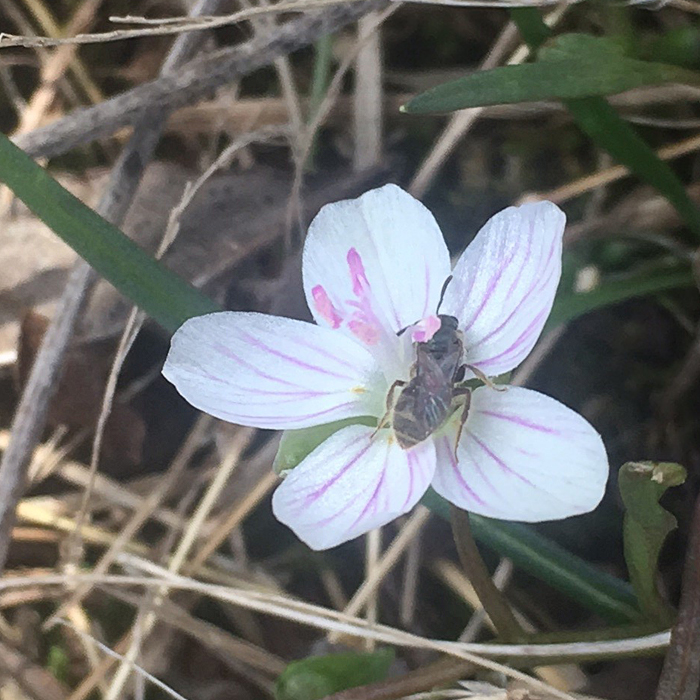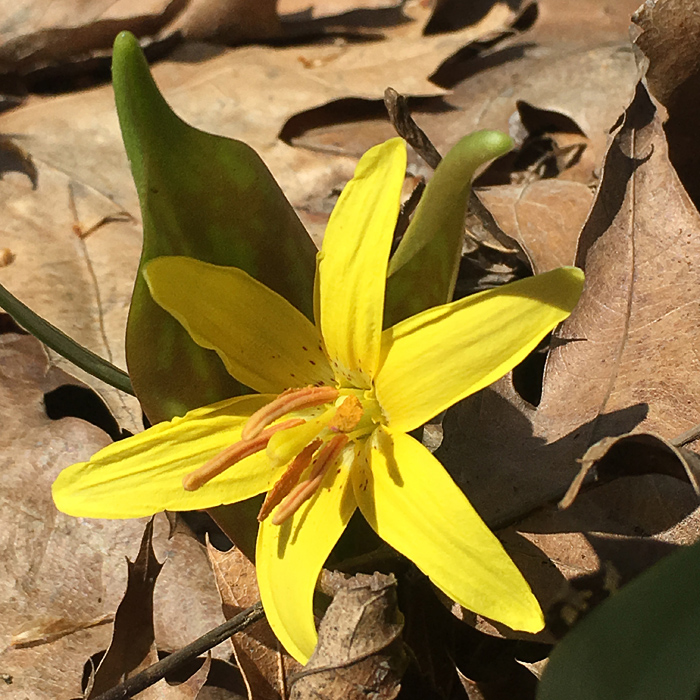Woodland Carpets of Wildflowers
By Karen Menard
Venture out to a Metropark this month or next and feast your eyes on the beauty of the spring wildflower displays.
Lush carpets of early bloomers like cutleaf toothwort, yellow trout lily and spring beauties entice us to return to see what surprises each week will bring. And, if you blink, you may miss a beat because timing is everything during April and May.
Ephemeral beauty in the woodlands is fleeting, as much of a wildflower’s reproductive cycle and growth habit lasts approximately just one month. Come summer, vegetative presence has been ghosted with only withered, yellow leaves left behind.
Efficiency takes precedence in the world of the spring wildflower.
In order to accomplish what is essential for survival, their window of time is narrow when considering the amount of ecological tasks in need of completion. All in all, a lot is achieved between the winter thaw and leaf out, as their amount of available light steadily dims while the forest canopy darkens.
These plants that thrive at the feet of towering trees, have evolved specialized biological strategies in terms of flowering schedules, pollinators and seed production. Most importantly, they are reliant on native pollinator availability and the seasonal growth cycles of our woodland ecosystems.

As spring temperatures continue to rise, many species take advantage of their ability to quickly take up accessible nutrients found in the rich, abundant leaf litter, filling their underground storage reserves. Nearby mycorrhizal (fungal) associations and easy moisture availability also serve as important components for nutrient transfer, sustaining the future of these populations and enhancing blooms.
Some early pollinators are specific to certain species of spring ephemerals, emerging around the same time as the flowers do. Called “oligolectic” or pollen specialists, these insects have evolved to only visit certain plant species, often within a single genus. Some species in the Andrena or mining bee group are appropriately named after the plant species that they associate with (For example: Andrena erythronii—Trout Lily (Erythronium americanum). It is believed that specialist bees are attracted to the oily compounds that coat specific pollen grains. Eventually, their offspring learn to detect the smell of these compounds, leading them quickly to the source.
As you walk through a blooming Metropark woodland like Pearson, Oak Openings Preserve or Fallen Timbers Battlefield under the lofty tree canopy, don’t forget to appreciate the persisting diversity of life on the forest floor. Consider the insect, fungi and plant species that, for eons each spring, have labored to connect and interact together as key players within the woodland ecosystem-- always with an intent to ensure the next generation of blooms.
Did you know?
Woodland ants play an important role in spring wildflower seed dispersal, referred to as myrmecochory. Violets, bloodroot, wild ginger, and trillium are some species that rely on ants. Their seeds contain elaiosomes (an oil rich coating).
Rich in lipids, amino acids and proteins, the elaiosome is consumed and the remainder of the seed is disposed of up to 10 meters away. A great white trillium seed will take from 5-9 years to develop a bloom.
Photos by Karen Menard: Top: spring beauty with pollinator; trout lily
